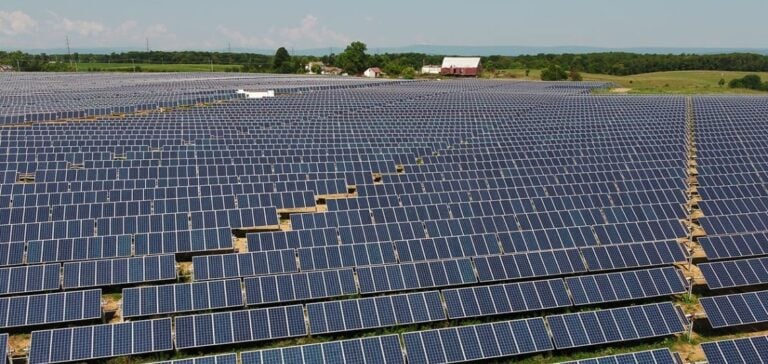The U.S. Department of Energy (DOE) announces a strategic partnership with Hecate Energy to develop a large-scale solar project on the Hanford, Washington site.
The project, part of the Cleanup to Clean Energy initiative, aims to convert federal land, formerly used for the nuclear weapons program, into a gigawatt solar power generation facility.
A Strategic Transition to Clean Energy
Since the start of the Biden-Harris administration, nearly 90 gigawatts of solar capacity have been added to the power grid, a major step towards the administration’s climate goals.
Jennifer M. Granholm, Secretary of Energy, emphasizes the importance of this project to the green transformation of the United States.
The Hanford site, historically linked to the U.S. nuclear program, is being reinvented as a carbon-free solar power generation center, illustrating a strategic transition to cleaner energy.
The project creates significant economic opportunities, particularly in terms of jobs and regional development.
Brenda Mallory, President of the Council on Environmental Quality, points out that the expansion of clean energy production is crucial to the protection of the environment and the health of local communities.
This project embodies the federal government’s strategy to maximize the use of government property to support the expansion of renewable energy.
Selection Process and Partnerships
Hecate Energy has been selected to negotiate a property agreement for the development of a large-scale photovoltaic system.
This selection is the result of a competitive process based on qualifications, including public consultations and information days in Hanford.
DOE and Hecate Energy will enter into negotiations to finalize the agreement, with the possibility of cancellation at any time.
The Cleanup to Clean Energy initiative, announced in July 2023, has already selected developers for carbon-free electricity projects in Idaho, Nevada, South Carolina, and now Washington.
These projects aim to meet the goals of Executive Order 14057, signed by President Biden in December 2021, by leveraging federal properties for renewable energy development.
Local impact and future prospects
The Hanford solar project will bring significant benefits to local communities, including Tribal Nations, by complementing regional planning efforts.
It will also strengthen Washington’s position as a hub for carbon-free energy solutions.
DOE is committed to conducting environmental reviews and following applicable regulatory processes, while continuing to collaborate with industry, communities, Tribal Nations, and other stakeholders.
This project illustrates how land formerly dedicated to nuclear production can be transformed into clean energy production sites.
It supports the administration’s energy objectives and offers rewarding prospects for local and tribal communities, aligning environmental objectives with tangible economic and social benefits.
The conversion of Hanford’s land to solar power represents a new era for the site, and demonstrates how strategic initiatives can lead to significant progress towards a sustainable energy future.






















